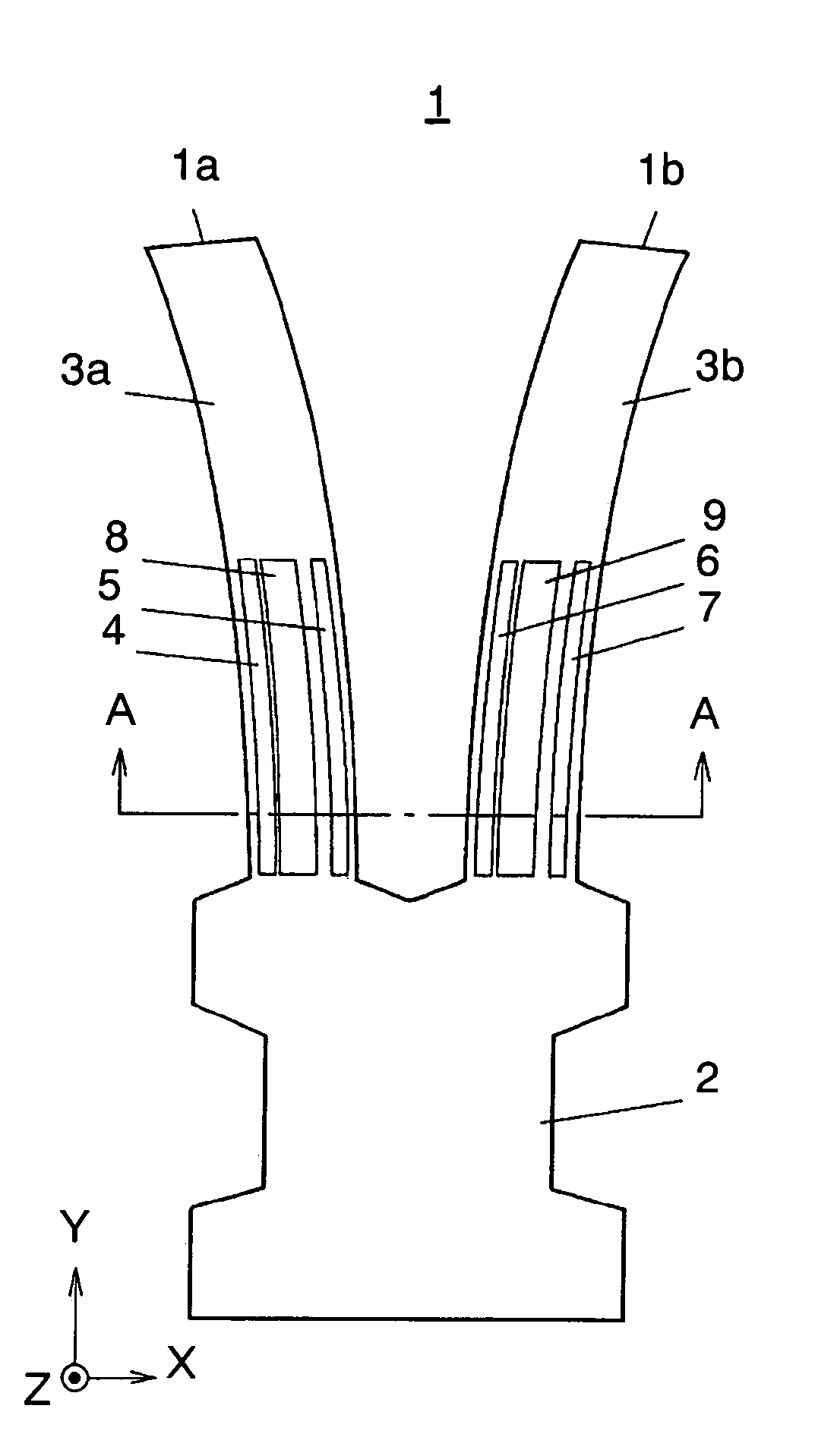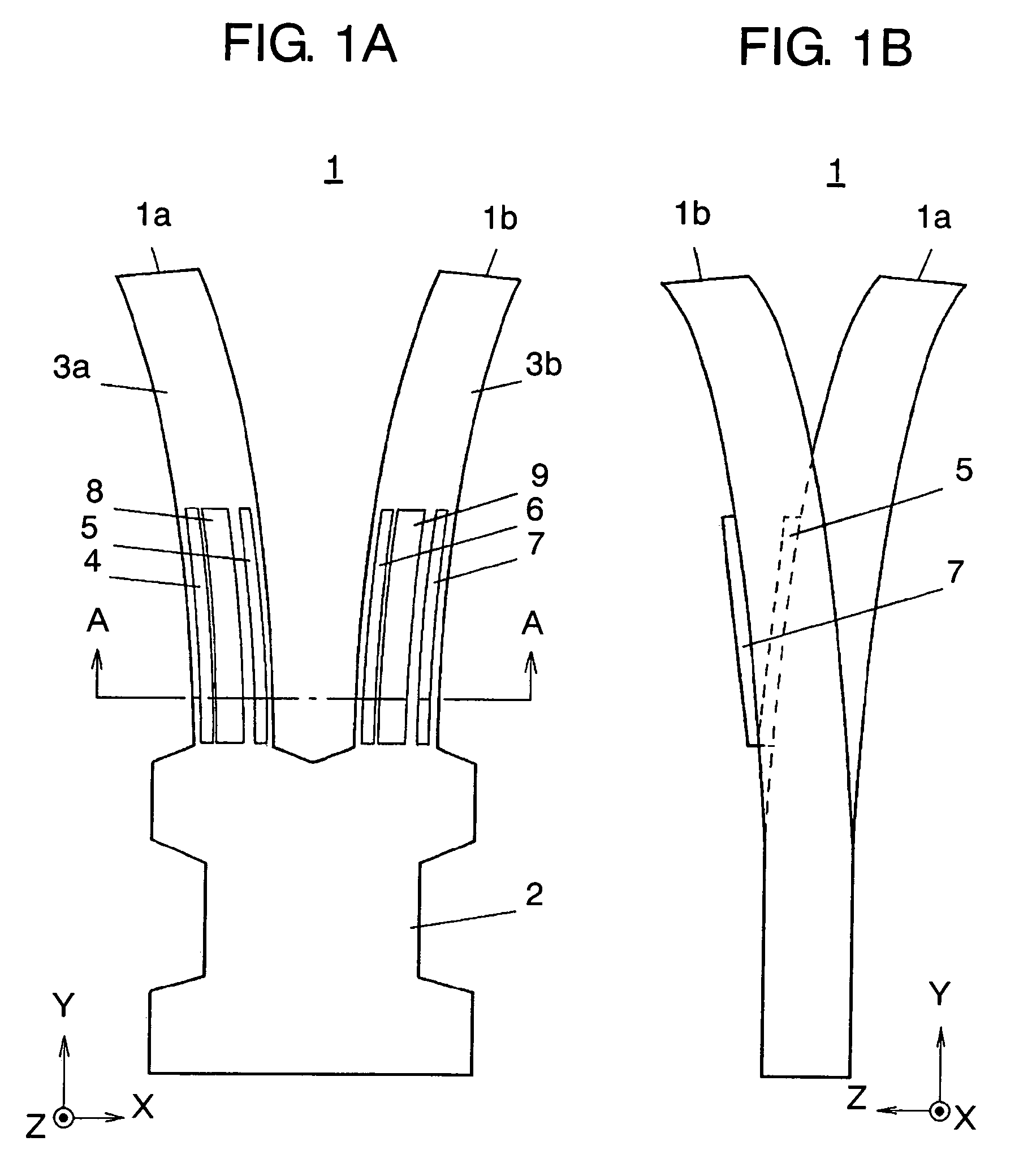Angular velocity sensor and method for manufacturing the same
a technology of angular velocity sensor and manufacturing method, which is applied in the direction of generator/motor, turn-sensitive device, instruments, etc., can solve the problem of unnecessary vibration components
- Summary
- Abstract
- Description
- Claims
- Application Information
AI Technical Summary
Benefits of technology
Problems solved by technology
Method used
Image
Examples
Embodiment Construction
[0094]An embodiment of the present invention will be described as follows with reference to drawings.
[0095]FIG. 1A is a plan view showing a tuning fork vibrator of an angular velocity sensor according to an embodiment of the present invention when it is driven in the X-axis direction; FIG. 1B is a side view of FIG. 1A; FIG. 2 is a cross sectional view taken along the line A-A of FIG. 1A; and FIG. 3 is an arrangement of tuning fork vibrators formed in the wafer according to the first embodiment. FIG. 4 is a flowchart showing the manufacturing processes on the cross section taken along the line B-B shown in FIG. 3. FIG. 5 shows manufacturing processes of the angular velocity sensor according to the present invention. FIG. 6 is a characteristic view to show the relationship between the positions of the tuning fork vibrators formed in the wafer in the X-axis direction by the manufacturing processes and the unnecessary signals generated on the sensing electrodes of the tuning fork vibrat...
PUM
 Login to View More
Login to View More Abstract
Description
Claims
Application Information
 Login to View More
Login to View More - R&D
- Intellectual Property
- Life Sciences
- Materials
- Tech Scout
- Unparalleled Data Quality
- Higher Quality Content
- 60% Fewer Hallucinations
Browse by: Latest US Patents, China's latest patents, Technical Efficacy Thesaurus, Application Domain, Technology Topic, Popular Technical Reports.
© 2025 PatSnap. All rights reserved.Legal|Privacy policy|Modern Slavery Act Transparency Statement|Sitemap|About US| Contact US: help@patsnap.com



